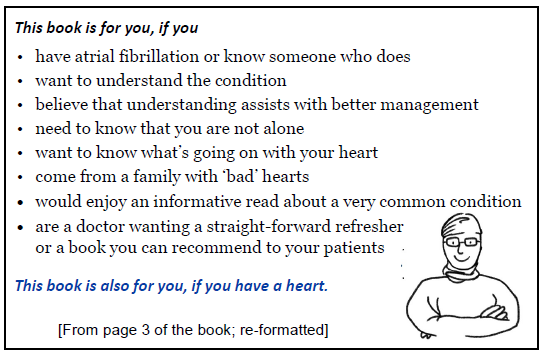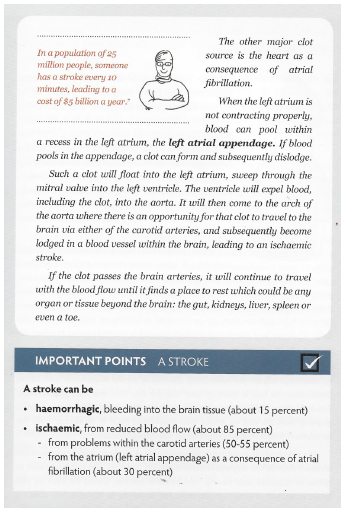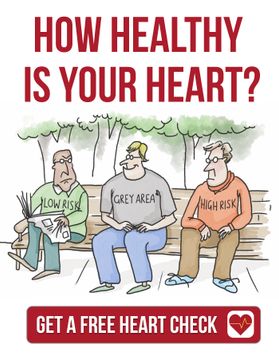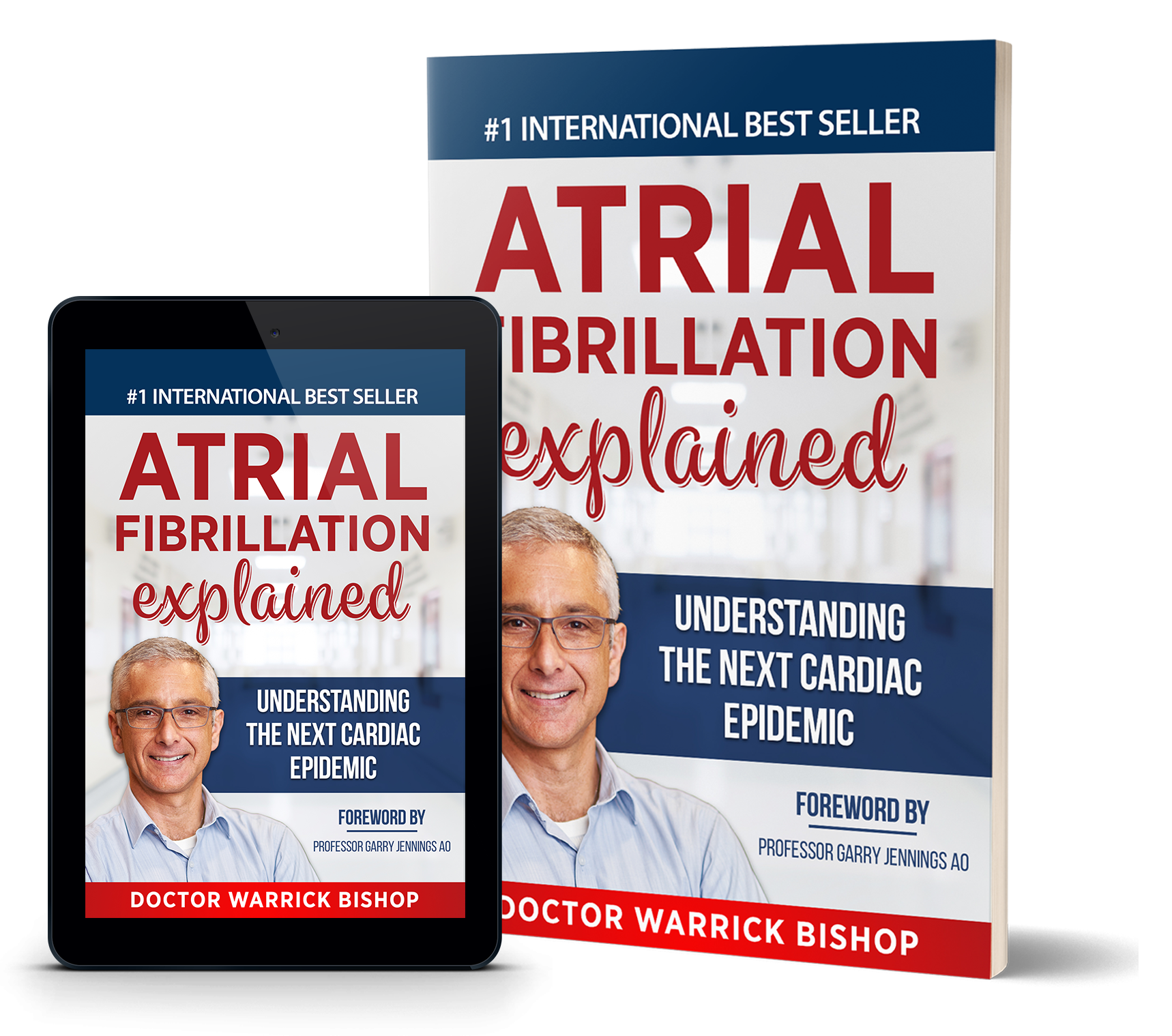Atrial Fibrillation Book Review by David McAndrew
Review:
Dr Bishop, in his previous book, Have You Planned Your Heart Attack?, wrote “This book is the beginning of a conversation, in which you are invited to participate.”
Atrial Fibrillation Explained would also be a good basis for patients to have conversations with their doctors. My impression is that anybody with a reasonable education should be able to read and understand the contents.
As one of the many Australians who live with AF, the book gave me a much better understanding of my condition and its treatment. I’m now in a much better position to discuss my condition with my doctors.
The subtitle, “Understanding the Next Cardiac Epidemic”, is a catchy headline, but it is questionable whether the condition should be described as an epidemic. The Macquarie Dictionary defines epidemic as: "affecting at the same time a large number of people in a locality, and spreading from person to person, as a disease not permanently prevalent there.” Whilst AF does affect a large number of people, it doesn’t spread from person to person like an infection, and it is permanently prevalent in our community. I note that the word “epidemic” is only used in the subtitle and on the back cover, and its use isn’t explained.
Buying the book:
Several online bookshops have the book listed for sale. Four had it listed with prices between $33 and $35 for paperback, and $46 to $50 for hard cover. Two others had considerably higher prices listed. It can also be purchased directly from the author: https://drwarrickbishop.com The website says: “Prices start at $9.95 for eBook.” Other prices are only given if you make a request to purchase, giving name and address and doing a Captcha exercise to prove you’re not a robot.
UNDERSTANDING THE NEXT CARDIAC EPIDEMIC
The heading above is the subtitle of a new book by Hobart cardiologist Dr Warrick Bishop. The actual title is Atrial Fibrillation Explained.
Atrial Fibrillation (AF) is the most common arrhythmia (abnormal heart rhythm); over 30 million people around the world have it. It is much more common in older people, and also commonly associated with lifestyle factors such as obesity, sleep apnoea, high blood pressure, excess alcohol consumption, and stress.
Because we have an ageing population, and the associated lifestyle issues are common in the Australian community, AF will probably become much more common in the community. This is likely to increase the demands on the health sector, as AF is itself a risk of developing other disorders, particularly stroke.
About the book:
In the Introduction, Dr Bishop tells as a case study the story of his grandmother, who was in her 80s, almost blind, and suffering multiple disorders including being wheelchair- bound, having diabetes, cardiac failure, and severe rheumatoid arthritis. She was in hospital when she was diagnosed with both atrial fibrillation and pneumonia.
Her AF was treated with Warfarin, which is the recommended treatment to reduce the risk of stroke. Unfortunately, with her other disorders the Warfarin was causing more health problems, so she was given a different treatment from the recommended one. This was a more appropriate treatment for her, taking into account her personal situation.
The point he makes is that a recommended treatment won’t work for everyone; a patient’s particular medical and personal circumstances need to be considered.
The book is divided into four sections:
WHAT AND WHO: THE CONDITION
HOW: TREATMENT
HOW: CONVERSATIONS
HOW: THE FUTURE
The “Contents” pages at the front very helpfully list not only the section and chapter titles, but also the headings of sections within a chapter. The best way to start using the book is to read it from cover to cover. However, the detailed contents pages make it much easier to use later as a reference.
The end of the book has several pages of glossary and index.
Throughout the book, there are informative diagrams and tables, some brief “Important to know” sections (in red ink), some highlighted “Important Points” summaries, and several case studies showing how patients with particular needs have been treated.
Quickly flicking through the book, the various ways in which the information is displayed gives a cluttered appearance (example at right) ― but when I was reading it straight through, the variety of formats didn’t cause me any problems.
In Chapter 1, the functioning of the heart is compared to a car engine, with pistons, valves, an electrical system, and fuel lines. This is probably a helpful way to connect with people who aren’t used to reading medical terminology.
Buy the Book here










